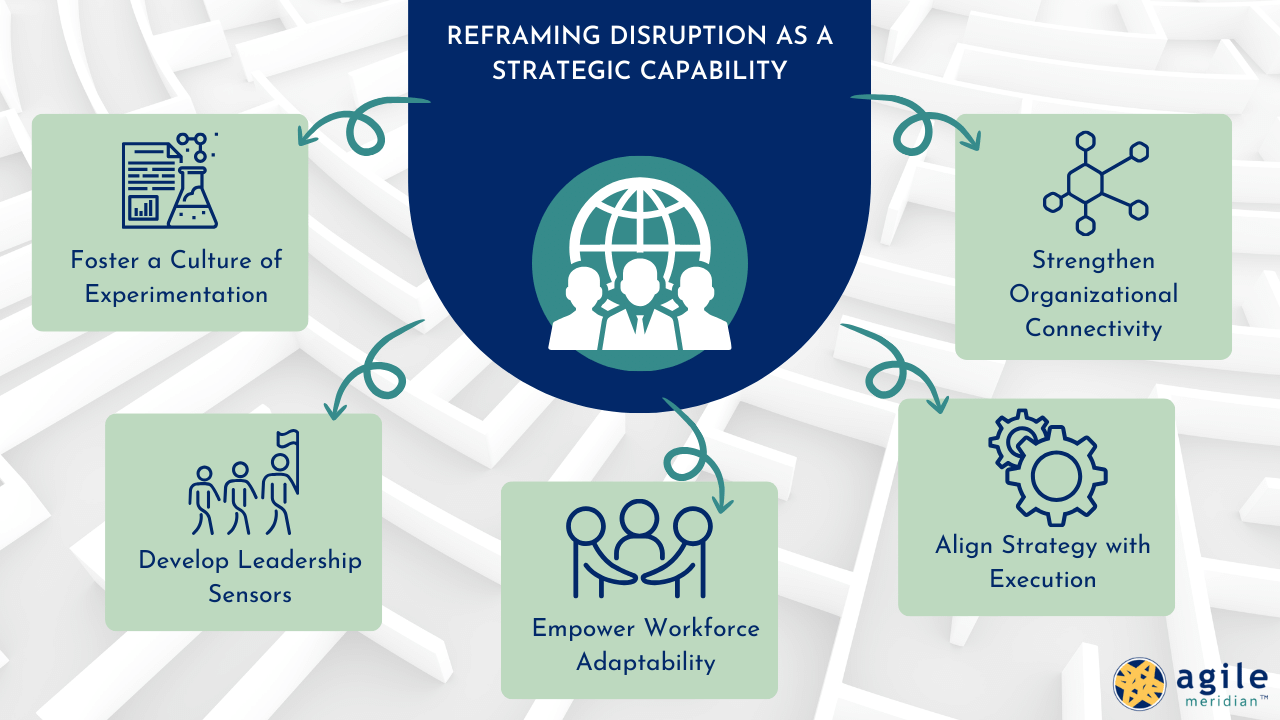Robust Theme
Dec 09, 2019 2020-04-08 7:40Robust Theme
Reframing Disruption as a Strategic Capability

by: Michael Jebber
I had the honor and privilege of being selected to present at Agile DC. Unfortunately, I could not attend due to contracting COVID-19 several days before the event, so my partner, Kumar Dattatreyan, stepped in and presented in my timeslot (muchos gracias, partner). The session was about reframing disruption as a strategic capability. I would like to summarize how organizations can reframe disruption as a strategic capability rather than a threat.
The COVID-19 pandemic thrust companies into a volatile, uncertain, complex, and ambiguous environment. While many struggled, organizations like Amazon, Zoom, and Moderna leveraged disruption to their advantage. They possessed the culture and leadership committed to continuous learning and improvement. This allowed them to capitalize on new opportunities faster than competitors wedded to legacy business models.
Past models for success no longer suffice in an era of accelerating change. As we’ve seen firsthand working with numerous companies, relying solely on existing processes, hierarchies, and talent experiences is a recipe for disruption in the wrong direction. Organizations have the raw ingredients to adapt but often lack the structures and leadership capabilities to leverage them effectively.
Silos stifle collaboration across boundaries. Rigid hierarchies prevent information flow. Legacy management habits bottleneck vital decisions. Meanwhile, emerging challenges require faster innovation cycles and more dynamic responses.
So, how can organizations develop disruption as a strategic capability? Here are several ideas:
Foster a Culture of Experimentation
Organizations must shift from avoiding disruption to viewing it as an opportunity for innovation. By continually testing new products, services, and business models, companies can evolve strategically versus reactively.
Leaders play a crucial role in cultivating cultural acceptance of failure as a learning mechanism versus something to be avoided. They need to be open to new operating models themselves rather than defaulting to historical norms.
Develop Leadership "Sensors"
Leaders require heightened senses to detect disruption early before it paralyzes the organization. This means being present (but not running) in operations, customer interactions, and the competitive landscape. It also requires dedicating strategic thinking time amidst endless meetings. It also means building an operating culture that empowers the organizational talent to search and respond to emerging changes with a “CEO’s lens” and make decisions quickly without relying on feedback loops to give permission.
Empower Workforce Adaptability
Investing in skills that enhance individual and team adaptability is essential. Employees at all levels should be trained in creative thinking, collaboration, and working dynamically. Structures that enable autonomy balanced with alignment, like Agile, also build flexibility.
Leaders need to model the mindsets and behaviors they want employees to adopt. This empowers people to respond quickly within their scope rather than await top-down decisions.
Align Strategy with Execution
Typically, strategy is developed annually and then handed off to execution teams. This linear approach hinders responding to disruption. By aligning strategy and execution, changes can flow both ways dynamically.
New strategies should be tested and refined based on rapid execution feedback. Structures like quarterly (or more often) business reviews that connect planning with delivery promote this. Active, living, vibrant feedback loops for PDCA activity against strategy are critical to improving your odds of success and bending with the changes along the way.
Strengthen Organizational Connectivity
Silos and bottlenecks inhibit information sharing and coordinated responses needed to capitalize on disruption. Leaders should systematically identify barriers to enterprise collaboration.
Cross-functional councils, communities of practice, and networks enhance visibility. Rotation programs build empathy across groups. Leaders also play a crucial role in connecting disparate initiatives and spotting conflict early.
In summary, reframing disruption as a strategic capability requires new ways of thinking and operating. Developing organizational adaptability accelerates learning, innovation, and resilience to thrive in volatile conditions. It starts with leadership commitment to enable the workforce and implement supportive processes.
The cost of inaction is extinction. However, organizations that harness disruption can turn rapid change to their advantage. I welcome your thoughts on advancing these ideas within your own companies. Thank you!
If you'd like to receive regular updates on business agility, organizational adaptability, and related topics, subscribe to our newsletter to get our latest insights delivered straight to your inbox.

